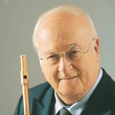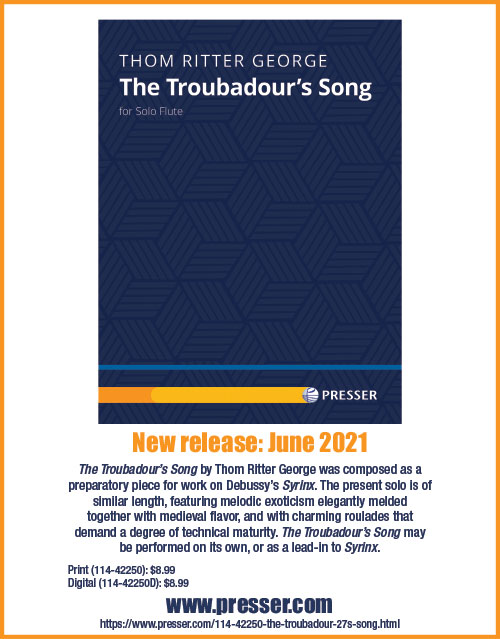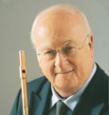Italian is the language of the voice, yet it is taken for granted as the language of music par excellence (which is French, actually). In a sense, Italian is the universal tongue of music, although 20th-century composers write instructions in German, English, and French. Italian musical expressions are so familiar that we often misuse or misunderstand their real meanings. Legato, for instance, means tied or slurred, instead of slightly interrupted sound.
The important suffix -ndo after a verb is common in Romance languages, French excepted, and stems from Latin. Known as the gerundive, the -ndo implies action in progress. The English language includes memorandum (to be remembered), agenda (things to be acted upon), and the scientific Q.E.D. (quad erat demonstrandum: things to be proven).
The Italian term accelerando, often abbreviated to accel., indicates a gradual increase in speed; the longer the passage, the slower the increments of the accelerando. Close in meaning is affrettando, with a feeling of rushing or urgency. The word accelerando appears in music when the tempo is slower, but we have to think ahead to the outcome of the accelerando, which might be far away. If the composer wants a sudden increase in tempo, a piu mosso would be indicated. The word accelerando actually means in the previous tempo, i.e. slower than what is coming up.
For the process of slowing down, allargando is used to imply broadening each value. Ritardando, often abbreviated to ritard., is close in meaning to allargando and suggests a decay of the basic pulse from the faster tempo to a slower speed. When a final ritard. is indicated, it is meant to bring about the termination of a piece, followed by silence, which is a vital element of music. For a gradual ritardando, each subdivision of time is imperceptibly shorter than the previous one, until the musical activity ceases.
When accompanying instruments have a steady pattern of eighths or sixteenths, the pulse should gradually slow down and the rest of the ensemble follows. I envision a wind-up toy or the battery-operated Energizer bunny that wears down until the motion stops with a final click.
The most misunderstood words are crescendo (abbreviated to cresc.) , the process of getting louder; and diminundo (abbreviation dim.), becoming softer.
The art of interpretation stems from the development of musical ideas. In the big picture of a composition these include counterpoint, but for servants of the single line, it is the art of phrasing to show harmonic progression, tension, and release.
The most important aspect of these is the way we crescendo and diminuendo, which are not dynamics but the evolution in progress thereof. The
indication diminuendo differs from piano (softer) or piano subito (suddenly soft). A diminuendo occurs at the highest dynamic for a passage. Our first concern should be to imagine where this leads so we can delay the softest sound until the final moment. In fact, if the passage descends, a natural tendency (called agogic )1 will cause the flute line to lose intensity until the diminuendo ends.
If the passage is four bars or more, the actual diminundo could take place on the last two bars. When the diminuendo appears within one bar, it could take place on the last note, especially if it is a harmonic resolution of an appoggiatura.2 Because long notes seem to diminish by themselves, they should be sustained instead of diminished, even in a diminuendo.
A crescendo is most evident, judging by the way most flutists dig in to it, yet it is a warning of the task at hand. Where am I going ? How far away is the culmination? It helps to hold back and keep some musical energy for the last outcome. Breathe early and manage your air when the crescendo begins so you don ‘t come up short. The flute ‘s natural agogic wants to jump ahead as a crescendo invites an accelerando, whereas a diminuendo tends to drag.
Our greatest pleasures are not so much in the actual accomplishment of the outcome as in the intensity of our desire and in the patience of our longing. Likewise for the construction of a crescendo: savor the buildup and don’t get there too soon. Because all dynamics tend to return to mf/mp, you can savor the moment by stretching a crescendo or a diminuendo longer than seems right at first. Know yourself, know your flute.
By all means, play intuitively but not before you have sorted out the tendencies of your playing and the urges of your emotions. In a passage that should go faster, slower, louder, or softer, help it along if the music so dictates or pull it back whenever it gets out of hand. The next time you see an Italian musical term, take time to ponder the origins and meanings of it and how it should influence the music.
Endnotes
1Agogic: It is the combination of the slight changes that occur during a human instrumental execution. For instance, the higher range of the flute tends to be brighter, the lower darker, etc.
2An appoggiatura is an indication of harmonic tension. This tension often resolves in the next note to which it is slurred. With exceptions, when two are slurred, the second one is a release of the first and should be played softer, which is not quite the same as saying that the first is louder than the second.







